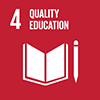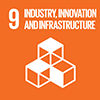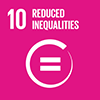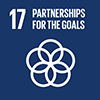Description/achievement of initiative
Promote innovative education through the implantation of robotics in schools and community-based groups. Through the opening of multidisciplinary teams, students well be able to learn STEM skills and promote to other schools/local government/students the importance of supporting SDG goals to improve our society. FIRST Robotics teams, additional to build robots, participate in projects to help their community, thereby working in developing SDG-based, sustainable, SMART-designed projects to help our community. With the endorsement of this partnership well be able to convince many other stakeholders to take part in projects that contribute to the efforts of SDGs.
Implementation methodologies
We participate in the FIRST Robotics Competition, an international program that promotes the learning of STEM skills in young students while at the same time participate as changemakers in their communities. Our teams have a special and unique focus towards working with projects based on the SDG, which in the long-run will have a positive effect in the members own skills development, their formation as leaders & global citizens, and the impact they will make to others.
How does FIRST Robotics work?
Each year teams work in training and preparation for the official season to being. On January, the organization FIRST (which leads the FIRST Robotics Competition program) launches a challenge to which students are required to build a robot in a six-week span that complies with the elements of the game and in accordance to the rules. Students must also create a business plan and a Projects Plan that explains the adminstrative work they did to sustain the group, promote STEM education, and the impact done to their community through their projects. Teams participates in qualifiers all over the world which lead to the FIRST World Championship in Houston, Texas on April.
Robotrojans STEAMex and Huaztech
Our teams, conformed by high school students and lead/mentored by college students, work upon three key areas: Engineering, Business, and Projects. Our own program includes an innovative and personalized formation-pedagogical model, which seeks to improve the leadership/group-working/technical skills that students acquire, as well as a career-orienting guidance that will aid them get into university, hopefully with a scholarship. Furthermore, we work with a Projects' model based in mentor-guidance, where students are able to identify on their own the issues that occur in their community, come up with a solution based on the SDGs, and have a mentor (college student) that aids him/her in the process of carrying out their project using SMART goals.
Arrangements for Capacity-Building and Technology Transfer
This project aims to fully work in capacity-building and technology transfer. The latter, in our projects, applies in the fact we work with our students to transfer our knowledge for them to get to have skills required to build a robot and apply engineering skills. Furthermore, some of the projects we work with our community involve our students transfering their technological skills to teach low-income children at public schools and community centers through workshops and the opening of more robotics teams. This creates a chain where us, as mentors, transfer our knowledge to our students, which later they will transfer other students to multiply the outreach of STEM education. Additionally, students, in their efforts of getting more sectors/stakeholders involved in the initiative, transfer their knowledge to government or even companies for them to support the project and potentially get them to be scouted by them for further job opportunities. As for capacity-building, this is a self-sustainable, exponentially-growing initiative. As we teach our students the necessary skills and knowledge for them to carry out their products (being a robot, a business plan, or a project), season after season we will be having students graduating and passing on to become university students. Letting them be passionate and involved in the project will make them capable to add up as mentors of the team, helping new generations to continue with the work that has been done and even improve as experience goes on. This will increase the number of people involved in the teams and thus multiply our capacity to make an impact with the initiative.
Coordination mechanisms/governance structure
The FIRST Robotics program has been active since 1989 and more than 80,000 students participate currently, being our teams part of the 90 teams in Mexico that participate in this international competition. In our case, both robotics teams (Robotrojans STEAMex 6832 and Huaztech 13653) are managed by eight freshmen and sophomore college students from the Universidad de Monterrey, whilst 40 high school students participate as members (from UDEM High School Campus San Pedro and the community-based team in Santa Catarina). These teams are multidisciplinary, for which we include engineering and business areas where students learn the necessary skills to carry out functions such as building a robot and creating a business plan, even if being only high schools students. It is to highlight that teams have the responsibility to create partnerships and alliances with NGOs, schools, government, organisms, private-sector, and other teams to multiply the impact they do through their projects, having students be part of real scenarios of project management and raising awareness of problematics they might work through their activities. Thereby, our team has a special Projects department, where our students have the opportunity to develop SDG-based projects for the community with the guidance of college students that serve as mentors for our kids. With this guidance, our students are able to plan, register, document, and give continuity to their projects using a SMART goals methodology.
Partner(s)
Robotics teams conforming the "FIRST UDEM - Robotrojans Project": FIRST Robotics Competition team Robotrojans STEAMex 6832 & FIRST Tech Challenge team Huaztech 13653 (High School students from UDEM High School Campus San Pedro, students from the community of La Fama in Santa Catarina, Nuevo Leon, and college students from Universidad de Monterrey [UDEM])





 May 2018
May 2018
 May 2018
May 2018
 May 2018
May 2018
 May 2018
May 2018
 Time-frame: August 2017 - May 2018
Time-frame: August 2017 - May 2018